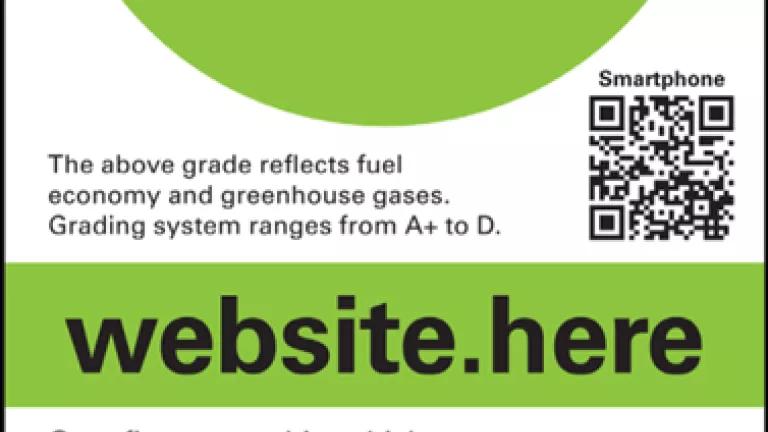
We all know that getting an A grade is better than a C. Why not use letter grades on the labels of new vehicles to show how they stack up in terms of fuel economy and carbon pollution? Earlier today, I testified before the U.S. EPA and Department of Transportation (DOT) at a public hearing on the agencies’ recent proposal to revise the fuel economy label of new cars and light trucks. My comments, available here, support a common sense approach to grade all vehicles on a single scale using letters, a method every middle school student understands.
I covered a number of topics in my testimony but here I just provide a few highlights of the discussion at the hearing:
Including all vehicles on the same rating scale is critical for giving consumers information about the full range of vehicles available to them. According to a survey by the EPA and DOT, over sixty percent of vehicle shoppers consider more than one type of vehicle, which means that shoppers may be comparing, for example a minivan, a crossover and station wagon. Therefore, they need a system that compares all vehicles on the same scale.
At the hearing automakers, represented by the Alliance of Automobile Manufacturers, and auto dealers, represented by one of their trade associations, expressed an opposing view. They claim the simple letter grades on a single scale would be confusing. The truth, however, is that letter grades make the cleanest and most efficient vehicles clearly stand out and grab consumer attention. For automakers that want to compete to bring the cleanest technologies to market, the letter grade should be seen as an advantage.
One automaker seems to get it. Hyundai was an exception among the auto companies at the hearing. Hyundai said it supports a letter grade rating approach. And, while expressing pride in its recent high ranking for environmental performance by the Union of Concerned Scientists, Hyundai also said vehicles should be rated on an absolute scale, not by class or type. The Hyundai representative described that a class-based rating system had already been tried in the company's native Korea but was rejected because consumers became confused. Shoppers did not understand why a clean, efficient car could be rated worse than a truck that might be better than other trucks of the same type but still consumes more fuel and emits more pollution than the car. The nation switched to a single scale for all vehicles.
The letter grade system that spans all vehicles on a single scale is an excellent step forward and is good for consumers. It helps consumers choose vehicles that will save the most money at the pump. Clear markers of clean vehicles will also be an aid to consumers looking to cut pollution and help reduce our oil dependence.
At the hearing a veteran of the Iraq war, Robin Eckstein, spoke eloquently in support of the letter grade system. Robin said that when people learn that as a U.S. Army Specialist she drove trucks in military supply convoys in Iraq, they often ask her what one can do to help the soldiers in the field. She said she’d like to be able reply, ‘Hey, pick an A’ when you’re shopping for your next car or at least buy the most efficient vehicle that meets your needs and your budget. A simple letter grade system that spans all vehicles on a single scale can help us all do just that.
Remember that you can tell EPA and DOT what you think of the labels; check out www.epa.gov/fueleconomy. There’s also another public hearing in Los Angeles on October 21st (see details here to participate).

